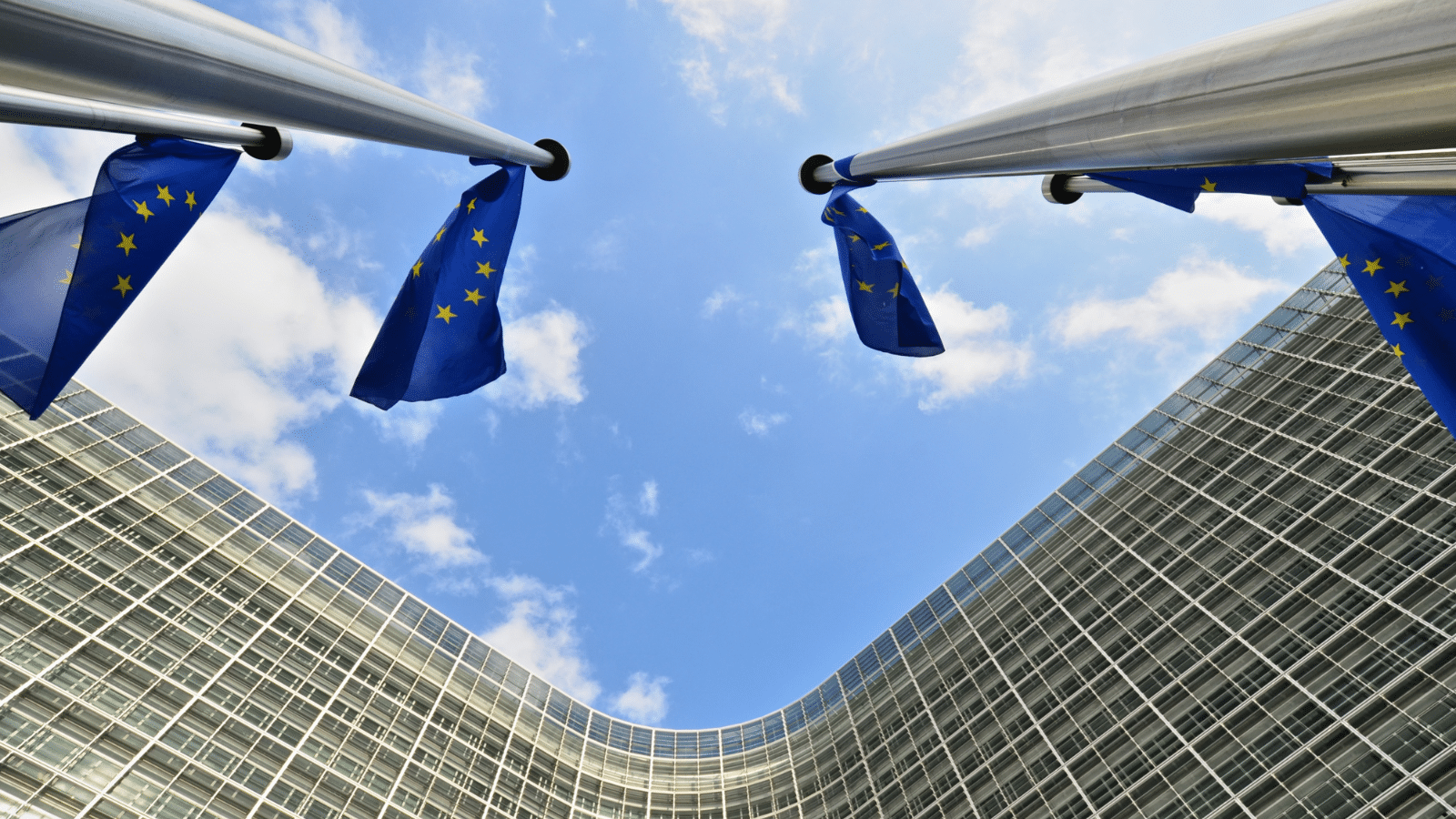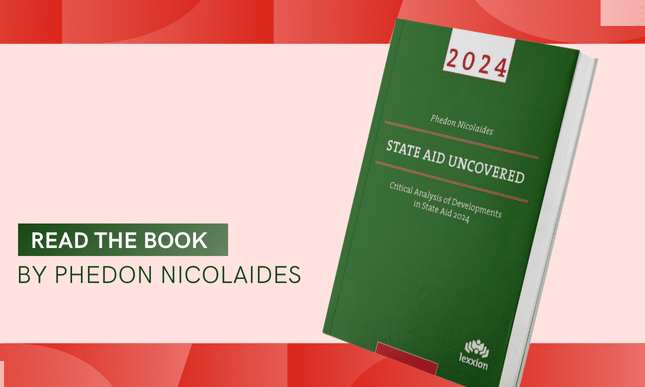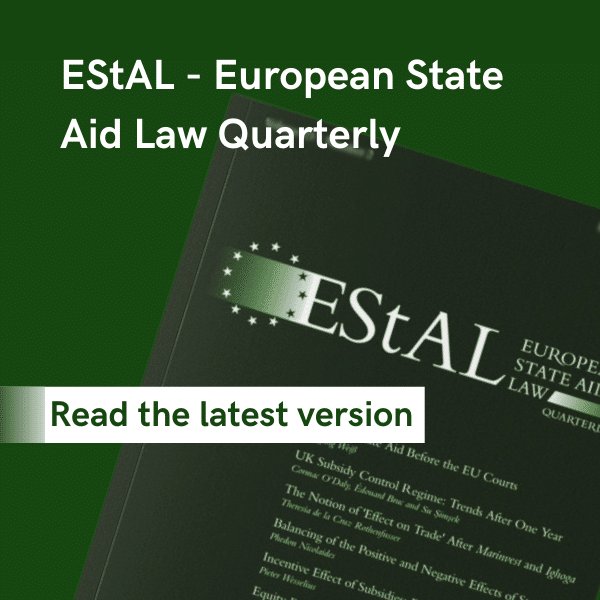
Introduction
The Temporary Crisis and Transition Framework for State aid expired on 31 December 2024. However, certain provisions remain in force until 31 December 2025. Those provisions are the following:
- Section 2.5.1: Investment aid for accelerating the rollout of renewable energy and for energy storage.
- Section 2.5.2: Operating aid for accelerating the rollout of renewable energy and for energy storage.
- Section 6: Aid for the decarbonisation of industrial production processes through electrification and/or the use of renewable and electricity-based hydrogen fulfilling certain conditions and for energy efficiency measures.
- Section 2.8: Aid for accelerated investments in sectors strategic for the transition towards a net-zero economy.
Many Member States have already had aid measures approved by the Commission on the basis of those four sections of the TCTF. Similarly, in November 2024, Italy notified an aid scheme whose purpose was to accelerate the rollout of energy from renewable sources [RES] generated by mature technologies. Soon afterwards, in December 2024, the Commission approved it in decision SA.115179.[1]
Because such technologies were adopted some time ago, their costs have come down significantly. Currently they incur generation costs close to market parity. Italy, however, instead of wating for the costs to decline further, concluded that the sharp increase in energy prices as a result of the Russian invasion of Ukraine made more urgent the need to reduce dependency on imported fossil fuels.
According to the decision, “(4) the increase in the prices of energy caused by the current crisis proved the urgency to quickly reduce dependency on fossil fuels imports and accelerate the energy transition, by expanding the availability of renewable energy in a cost-effective way in line with the Fit for 55 package and REPowerEU Plan. The measure also intends to deploy renewable energy generation projects that are needed for the transition towards a net-zero economy in line with the Green Deal Industrial Plan.”
Form and need of aid, budget and eligible beneficiaries
The Italian scheme provides operating aid in the form of two-way contracts for difference [CfD]. The aid will be allocated through actions. It is also possible for installations with a capacity below 200 kW to opt for feed-in tariffs. The operating aid will be paid during the useful lifetime of the installations up to a maximum of 20 years.
The total estimated budget is EUR 9.7 billion while the annual outlay is expected to be EUR 490 million. The scheme will be financed by a levy included in the electricity bills of final consumers. The revenue from the levy will be collected by electricity suppliers, who will transfer the amounts to electricity distributors who in turn will transfer the money to GSE, a wholly-owned state body responsible for the scheme and for the promotion of renewable energy more broadly.
RES installations anywhere in Italy are eligible for aid, provided they have not already started work. In addition, installations located in the territory of other EU Member States will be allowed to participate in the auction procedures, subject to certain conditions.
With the exception of its focus on mature technologies, the scheme is otherwise technologically neutral. The focus on mature technologies is justified by two reasons: The need to diversify the sources of energy and the fact that newer, more innovative technologies are already supported by other aid schemes [see paragraph 29 of the Commission decision]. Eligible technologies are: Solar photovoltaic, onshore wind, hydroelectric, and sewage gases.
Although the targeted technologies incur costs close to market parity, the net present value [NPV] of reference projects is still negative. Therefore, investors have no incentive to undertake them [see paragraph 28 of the decision].
Selection procedure
“(33) Beneficiaries with an installed capacity above 1 MW will be selected through competitive bidding procedures launched by the GSE at national level and separated by technology”. “(35) The volumes of capacity tendered in each procedure will be set to ensure that the bidding process is effectively competitive ex-ante, meaning that not all bidders will receive aid.”
The selection procedure will be as follows:
“(38) 1. Applicants must indicate in their application the offered reduction in percentage terms from the maximum strike price applicable to the project they intend to develop. The rankings are based solely on the percentage reduction proposed. 2. If the offers received at a price below the strike price are less than 105% of the target power quota, 5% of the overall capacity offered by the bidders is excluded from the ranking. The excluded offers belong to the bidders that offered the highest prices (thus the smallest reduction from the maximum strike price), unless these prices are below the minimum strike price. In the latter case these low bids are not excluded from the ranking. This provides an additional safeguard to ensure the competitiveness of the auctions. 3. The supply curve is built by ranking bids from the lowest to the highest price offered. Successful bids are all those below or at the intersection of the demand and supply curve.”
In other words, bids will be ranked in reverse order to the difference between the offered or “strike” price and the maximum price set by the Italian authorities. The bid with the lowest strike price will be ranked first, the bid with the second lowest strike price will be ranked second, and so on. The associated capacity of each bid will be added in accordance to its ranking until the total reaches the volume of the expected demand. All bids above that level will then be rejected.
Next, “(44) the selected beneficiaries will receive aid in the form of a two-way CdF for each kWh of electricity produced and injected into the network. If reference market prices are below the awarded strike price, the beneficiary will be compensated the difference, while if reference market prices are above the awarded strike price, the beneficiary will transfer the difference to the State. The awarded strike price will be determined in the competitive bidding procedures (“pay as bid”) for installations with capacity higher than 1 MW. The strike price of the two-way CfD of installations with installed capacity lower than 1 MW will be administratively determined […] and will be set to cover expected net costs, including the estimated WACC, and taking into account all main revenues and any aid already received.”
“(45) In order to preserve market incentives, for installations with capacity above 1 MW, only 95 % of the electricity produced by each beneficiary will be supported under the two-way CfD, leaving the remaining 5 % exposed to market risk. The producer will be able to sell all the produced electricity, including the part of the electricity production which will not be supported by the CfD, directly on the market. The producer is also free to conclude longer-term power purchase agreements covering these quantities.”
Moreover, “(50) the awarded strike prices for photovoltaic installations will be corrected to account for the different levels of insolation across regions”. “Insolation” is the amount of time that the sun shines, which varies geographically.
“(51) The Italian authorities explained that, according to productivity data (measured as the amount of full load hours) recorded in the individual regions from 2015 to 2021, the average productivity of photovoltaics in the central regions and northern regions are respectively 6% and 15% lower than in the south of the peninsula. The correction is therefore aimed at compensating for the different level of productivity of the installations with respect to their location, and it is aimed at ensuring a level playing field among the beneficiaries.” The correction is + 4 €/MWh and + 10 €/MWh for central and northern regions, respectively.
Presence and compatibility of the aid
The scheme constitutes State aid as it satisfies all four criteria of Article 107(1) TFEU. Although the levy that finances the scheme is paid by consumers, it is determined by law and it is managed by a state-owned body. The scheme confers an advantage because eligible undertakings obtain a benefit that is not available under normal market conditions. Lastly, given that electricity is traded across borders, the aid affects trade between Member States and distorts competition between RES energy and energy produced by fossil fuels or by non-eligible RES technologies.
The Commission assessed the compatibility of the aid with Article 107(3)(c) in accordance with the conditions laid down in the TCTF. Although the overall legal basis of the TCTF is Article 107(3)(b) [remedy of a serious economic disturbance], the legal basis for the transitional provisions in sections 2.5, 2.6 & 2.8 is Article 107(3)(c) [development of economic activities]. In particular, the Commission examined whether the Italian scheme complied with the requirements of point 78 of the TCTF.
“(79) The Commission considers that Member States may need to take additional measures in line with the REPowerEU Plan, to accelerate the decarbonisation of European industry in order to achieve the Union’s energy and climate targets. The adoption of the Temporary Crisis and Transition Framework demonstrates the Commission’s view that State aid is justified and can be declared compatible with the internal market on the basis of Article 107(3), point (c), TFEU for a limited period of time if it contributes to speeding up the rollout of renewable energy, storage and renewable heat in line with the REPower EU Plan.”
“(80) The Commission considers that the measure is necessary, appropriate and proportionate in the current context and can be declared compatible with the internal market on the basis of Article 107(3), point (c) TFEU. In particular:
(a) The measure provides operating aid for the promotion of energy from renewable sources. […]
(b) The limitation of the measure to certain technologies does not include an artificial limitation and that discrimination on this basis is excluded. […]
(d) In the absence of aid, the beneficiary would not carry out the project or would carry it out in a restricted or different manner. Consequently, the economic activity supported by the measure would not be undertaken. This counterfactual scenario is considered realistic and does not lead to a breach of Union law. Since in the absence of aid, the economic activity supported by the measure would not be undertaken, the Commission concludes that there is a need for the aid and an incentive effect.” […]
(g) The Italian authorities have submitted elements that confirm that the competitive bidding process allocating the aid will be open, clear, transparent, non-discriminatory and effectively competitive, based on objective criteria that are defined ex ante and that minimise the risk of strategic bidding and undersubscription. In addition, at least 70% in the total selection criteria used for ranking bids has been defined in terms of aid per unit of energy capacity. Indeed, the ranking is based solely on price criteria, since it is formed based on the percentage reduction proposed by the applicant compared to its applicable reference tariff. […]
(h) Installations with an installed capacity equal or below 1MW will receive direct access to the aid. In this case, the aid is set administratively by the competent energy regulatory authority. […]
(i) The aid is designed in such a way as to avoid undue distortions of the efficient functioning of markets and will preserve the effectiveness of incentives and price signals. In particular, beneficiaries are not incentivised to offer their output below their marginal costs, and will not receive aid for production in any periods in which the market value of that production is negative, since in these periods the remuneration is based on the production capability of the installation rather than actual output. […]”
Compatibility with Articles 30 & 110 TFEU
The Commission also examined the compatibility of the aid with other provisions of the TFEU and secondary legislation.
“(81) State aid measures that entail, by themselves, by the conditions attached to them or by their financing method a non-severable violation of Union law cannot be declared compatible with the internal market.”
“(83) If the supported activity or aid measure or the conditions attached to it, including its financing method when it forms an integral part of it, entail a violation of relevant Union law, the aid cannot be declared compatible with the internal market. For example, in the field of energy, which is relevant in the case at hand, any levy that has the aim of financing a State aid measure and forms an integral part of that measure needs to comply in particular with Articles 30 and 110 TFEU.”
“(84) According to settled case law, for a levy to be regarded as forming an integral part of an aid measure, it must be hypothecated to the aid under the relevant national rules, in the sense that the revenue from the charge is necessarily allocated for the financing of the aid and has a direct impact on the amount of aid and, consequently, on the assessment of the compatibility of that aid with the common market. In particular, the concerned charge must be “levied specifically and solely for the purpose of financing the aid at issue” and must be “necessarily allocated” or “wholly and exclusively” allocated for the purpose of financing the aid at issue.”
On the basis of the above principles, the Commission found that Italian scheme “(85-86) will be financed fully and exclusively by a levy imposed on electricity consumption as part of the electricity tariffs paid by final consumers, […] Against this background, the Commission cannot exclude the existence of hypothecation between the levy and the aid awarded and has examined its compliance with Articles 30 and 110 TFEU.”
Then the Commission explained that “(87) according to case law, a charge which is imposed on domestic and imported products according to the same criteria may nevertheless be prohibited by the Treaty if the revenue from such a charge is intended to support activities which specifically benefit the taxed domestic products. If the advantages which those products enjoy wholly offset the burden imposed on them, the effects of that charge are apparent only with regard to imported products and that charge constitutes a charge having equivalent effect to custom duties, contrary to Article 30 TFEU. If, on the other hand, those advantages only partly offset the burden borne by domestic products, the charge in question constitutes discriminatory taxation for the purposes of Article 110 TFEU and will be contrary to that provision as regards the proportion used to offset the burden borne by the domestic products.”
The Commission further explained that “(88) in line with its decisional practice, the Commission considers the opening of the competitive bidding process to producers from other Member States and neighbouring countries […] to remedy any potential discrimination against RES producers in other Member States, under Articles 30 and 110 TFEU.”
Consequently, the Commission concluded that “(89-90) the financing mechanism of the notified aid measure does not infringe Article 30 or Article 110 TFEU, and notes that there is no indication that the either the aid measure, or the conditions attached to it entail a non-severable violation of relevant Union law. […] In addition, the Commission has no indications of any possible breach of Union law that would prevent the notified measure from being declared compatible with the internal market.”
The Commission also found that all the other relevant requirements of the TCTF were satisfied and proceeded to authorise the aid.
[1] The full text of the Commission decision can be accessed at:
https://ec.europa.eu/competition/state_aid/cases1/202451/SA_115179_72.pdf



